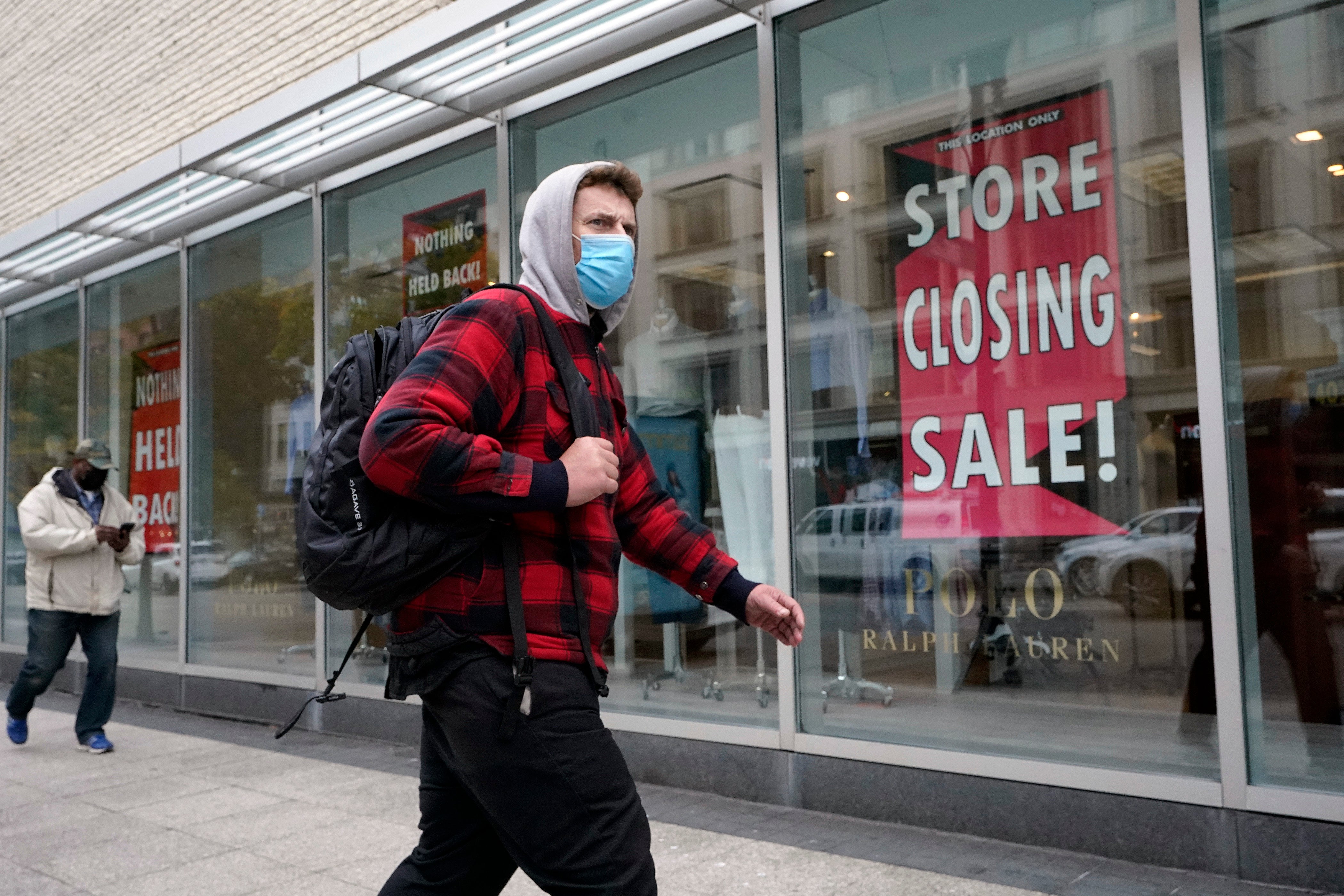US consumer spending rose a moderate 1.4% in September
U.S. consumers increased their spending by 1,4% in September, a slightly better gain than expected but still well below the big increases seen in May and June, adding to concerns that Americans remain cautious with the viral pandemic resurging across the country and impeding the economy

Your support helps us to tell the story
From reproductive rights to climate change to Big Tech, The Independent is on the ground when the story is developing. Whether it's investigating the financials of Elon Musk's pro-Trump PAC or producing our latest documentary, 'The A Word', which shines a light on the American women fighting for reproductive rights, we know how important it is to parse out the facts from the messaging.
At such a critical moment in US history, we need reporters on the ground. Your donation allows us to keep sending journalists to speak to both sides of the story.
The Independent is trusted by Americans across the entire political spectrum. And unlike many other quality news outlets, we choose not to lock Americans out of our reporting and analysis with paywalls. We believe quality journalism should be available to everyone, paid for by those who can afford it.
Your support makes all the difference.U.S. consumers increased their spending by 1.4% in September, a modest gain but far less than the big increases of late spring, adding to concerns that Americans remain cautious with the viral pandemic resurging across the country and impeding the economy
The September gain marked the fifth straight monthly increase in consumer spending the primary driver of the U.S. economy, since the virus erupted in early spring and flattened the economy. But the recent slight increases reflect an economy weakened by the virus and by the failure of Congress to provide another stimulus package to struggling individuals and businesses.
Friday’s report from the Commerce Department also showed that income, which provides the fuel for spending, rose 0.9% in September. That moderate gain followed a sizable drop of 2.5% in incomes in August.
The economy would weaken if consumers, who drive roughly two-thirds of economic activity, start cutting back on spending now that confirmed coronavirus cases are accelerating and the stimulus aid that Congress enacted in the spring for businesses, individuals and laid-workers has expired.
Since the pandemic struck, Americans have been spending freely on goods — from cars and clothing to furniture and sporting goods — while cutting back sharply on purchases in the service sector.
Services, which make up the bulk of the economy, include everything from bars, hotels and restaurants to airlines, hair salons and movie theaters. The service industry and its employees have been hard hit by people's reluctance or inability to shop, travel, dine out or attend entertainment events as they formerly did, a trend that is hampering the overall economy.
On Thursday, the government estimated that the economy, as measured by the gross domestic product, surged by a record-shattering 33.1% annual rate in the July-September quarter. That increase followed a record 31.4% annual plunge in the previous quarter, and it still left economic output about one-third below the peak it reached in the fourth quarter last year.
The third quarter rebound was led by a record 40.7% increase in consumer spending in the third quarter. But economists worry that this surge will not be sustained in the final three months of this year.
Economists generally foresee annual GDP growth of around 5% in the current fourth quarter. But they warn that unless Congress can reach agreement on a new aid package for jobless Americans and small businesses struggling to survive, the economy could suffer a reversal early next year.